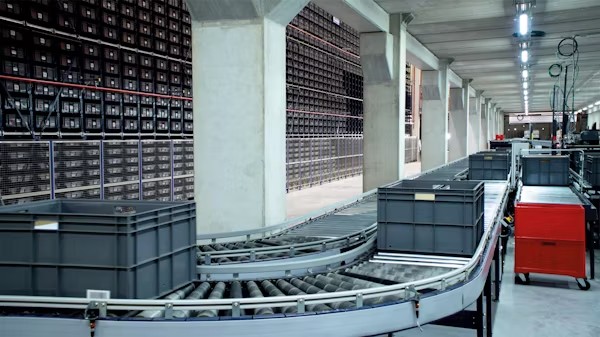As worldwide renewable power usage expands, companies producing energy storage have become vital. Through wind, solar, and related technologies—each bound to vary with the weather—these manufacturers supply the batteries, containers, and control systems that smooth the gap between generation and demand. For business buyers—including utilities, factories, and commercial property owners—the stored power now underpins grid reliability and economic viability. This article tracks manufacturer-led innovations, evaluates the obstacles still blocking faster deployment, and sketches the prospects that most interest corporate and public investors.
Renewable energy’s exceptional rise, now a race toward net-zero commitments, has provoked a parallel race toward storage the grid can rely on. Otherwise, the peaks and gaps caused by sunlight and wind risk voltage swings, overloading, or blackouts that no regulator or buyer can afford. In the past three years, a generation of manufacturers has rolled out higher-energy-density batteries, standardised modular container plants, and hybrid systems that draw on batteries, flywheels, and hydrogen to anchor supply to the daily demand curve.
B2B clients from large industrial operators to utility firms now regard energy storage as a non-negotiable enabler of renewable integration. These systems let firms cut fossil fuel dependence, boost energy security, and stay ahead of tightening policies aimed at carbon reduction.
Technological Innovations Fueling Market Momentum
Breakthrough technologies are propelling energy storage system manufacturers into a steep growth curve. Advances include high-density lithium-ion modules, molten-salt and polymer-flow batteries, solid-state constructs, and hybrid architectures that marry different storage chemistries. These innovations boost round-trip efficiency, cycle life, and intrinsic safety—key metrics that make megawatt-scale rollouts economically justifiable. Complementary to the hardware, energy management platforms equipped with artificial intelligence deliver continual performance tuning, predictive maintenance alerts, and aggregated control across dispersed assets. B2B clients therefore enjoy materially lower operational expenditures, longer asset revenues, and attractive capital paybacks. The synergy of advanced electrochemistries and intelligent software is positioning storage manufacturers as foundational facilitators of global renewable-scale acceleration.
Market Geography: Expansion and Strategic Hubs
The global energy storage sector is accelerating at an unprecedented pace, underpinned by fiscal incentives, binding renewable portfolio obligations, and surging industrial appetite. North America, the European Union, and Asia-Pacific lead, each protected by coherent regulatory frameworks, high penetrations of renewable dispatch, and a manufacturing base capable of deploying assets in the megawatt, hour, and scale.
Energy storage systems manufacturers are seizing the opportunity created by the global green energy push by opting to build production plants where demand is heating up, teaming up with local firms, and tailoring their technologies to the distinctly different energy scenarios encountered across regions. Take industrial firms in economies with frequent grid interruptions: their purchases of storage systems are growing, driven by the need to level out supply. Meanwhile, developers in the commercial sector are installing storage to curtail peak-demand charges, demonstrating how the same technology is evolving to solve specific local challenges.
This carefully measured international expansion lets firms ramp production without undue risk, broaden their customer segments, and respond nimbly to the changing procurement habits of commercial, industrial, and utility-scale clients in an ever-widening set of markets.
Regulatory Support and Industry Standards
Government actions are the single most consequential set of variables guiding the expansion of energy storage manufacturers. Almost every major energy market now combines financial incentives, capital grants, and tax concessions with targeted procurement policies to shift the economics of storage in favor of grid-scale, commercial, and industrial buyers.
Simultaneously, safety, performance, and interoperability standards are crystallizing. Mandatory and voluntary compliance with IEC and UL benchmarks confirms that storage products can deliver predictable performance under a wide array of operational stresses and that their output and arrays costs are compatible with most technology portfolios. For business customers, this regulatory backdrop lowers the cost of risk assessment, reinforces expectations about the technology’s viable lifespan, and simplifies the logistics of fielding storage across a cluster of manufacturing plants or microgrids. By interrelating policy incentives with robust, scalable standards, governments grant manufacturers the breathing room to globalize without sacrificing the rigor needed to maintain stakeholder confidence in product reliability.
Strategic Partnerships and Collaborative Projects
In energy storage, collaboration drives innovation and speed to market. Systems manufacturers are increasingly teaming up with renewable project developers, grid operators, and equipment vendors to build integrated, full-scope offerings. These joint initiatives bundle storage with solar arrays, wind farms, and microgrids, creating one-stop, turnkey packages for commercial customers looking to move quickly on sustainability commitments.
For B2B customers, pairing manufacturers with energy service providers standardizes procurement, installation, and long-term service. Enterprises gain access to proven, scalable storage recipes and sidestep the time and expense of developing proprietary engineering know-how. This synergy shortens time from procurement to treated load, reduces the exposure to operational risk, and collectively boosts renewable energy penetration across the grid.
Market Challenges and Solutions
The surge in energy storage demand has unearthed several persistent headwinds. Initial capital outlays remain substantial, rapidly changing technology frameworks add complexity, and piece-meal regulatory landscapes slow project rollout. Parallel constrictions in the battery supply chain, including chokepoints in key mineral inputs and sophisticated processing steps, elevate lead times and strain manufacturer timelines.
Manufacturers are meeting these hurdles by bolstering R&D budgets to squeeze more efficiency from batteries, wean systems off scarce materials, and push overall costs down. Adopting modular and scalable architectures means end-users can stage investments, adding capacity piecemeal and avoiding big upfront commitments. By taking preventive rather than reactive measures these firms strengthen their image as trusted, long-term allies in the B2B renewable sector.
Future Outlook and Growth Opportunities
The trajectory for firms producing energy storage solutions remains strongly upward. Fresh capital for renewable projects worldwide, the rollout of digitally managed grids, and rising corporate pledges to cut carbon are poised to raise storage demand for at least the next ten years. Further breakthroughs in chemistry, advanced energy control software, and hybrid designs will create even broader opportunities, providing B2B customers with systems that are efficient, adaptable, and economical.
Growing use cases, including utility-scale load balancing, commercial energy arbitrage that exploits pricing differentials, and resilient microgrid designs, are generating fresh balance-sheet gains. Manufacturers that wisely scale their factories, forge worldwide alliances, and back next-gen technologies will dominate market share and advance the shift to an energy sector that operates on net-zero foundations.
Across the globe, the rise of energy storage systems is redrawing the map of renewable energy. By delivering flexible, high-performance, and dependable storage, energy storage system makers equip other businesses to weave renewables into daily operations, elevate productivity, and fulfil ambitious carbon-reduction goals.
From breakthroughs in technology and broad-based market reach to joint ventures and adherence to evolving regulations, sector evolution is gaining pace. Firms that track these currents and forge alliances with established system makers unlock simultaneously measurable financial returns and measurable ecological progress. In the final analysis, the systems are no longer discretionary—they have become decisive tools that help companies excel in tomorrow’s energy economy.









